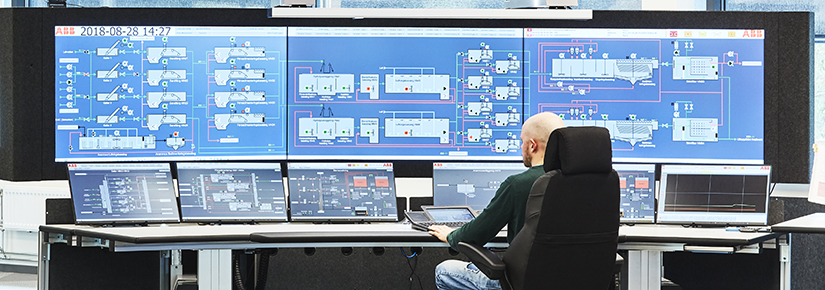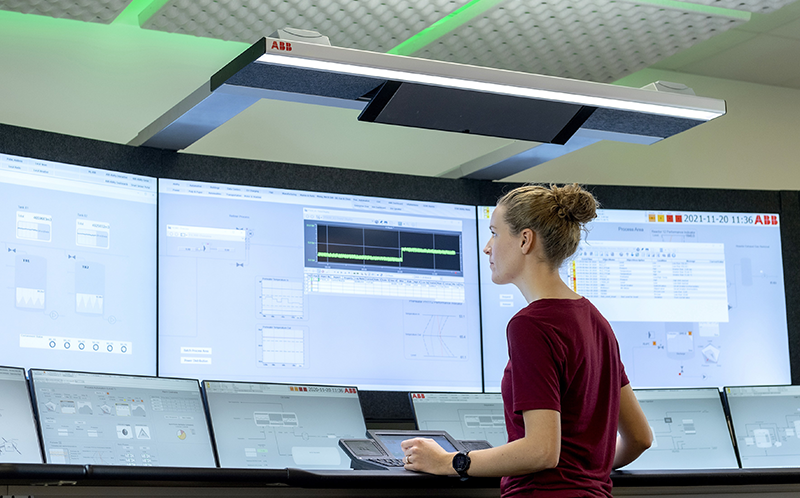
Users get on board to shape the future of Distributed Control Systems
By By Luis Duran, ABB
Features ABB DCS IIoT Namur NOA open architecture Open Process Automation Forum Operational Technology OT Open DCS standards offer access to the data companies need, allowing them to be more efficient and effective as the business environment becomes ever more challenging and changeable.
Open DCS standards offer access to the data companies need, allowing them to be more efficient and effective as the business environment becomes ever more challenging and changeable. Attention is increasingly being focused on the metamorphosis of Distributed Control Systems (DCS) into the automation systems of tomorrow as plant owners accelerate the adoption of Industry 4.0 and embark on their digital transformation journeys. This article looks at some of the initiatives facilitating the development of systems with openness, security, and interoperability at their heart.
Although Distributed Control Systems (DCSs) were originally based on purpose built Operational Technology (OT), they have since evolved and adopted commercial off-the-shelf technology (COTS). The result is more flexibility and options available to users as well as Information Technology (IT) to link up previously isolated islands of control.
This profound evolution has seen DCSs add more functions and offer more benefits over the 40 years since their launch, yet current users are demanding even more — they want their DCSs to become ever more open, expandable, and flexible.
Whereas the traditional DCS market was largely based on hardware with hard coded functionality baked into its design, today’s DCSs largely rely on all software. Shifting knowledge from hardware to software, enables the DCS to become much more agile. This offers the opportunity to introduce plug and play components and shifts the industry away from proprietary solutions that tie users to a single manufacturer.
Developments in the Internet and enhanced connectivity have highlighted deficiencies in DCSs, most notable among these being their lack of robust cybersecurity. Over the last decade, many industries have come to see this as a critical issue, one which is increasingly driving changes in the way the DCS handles information and indeed how it works.
Another factor is the way that some major industries use DCSs, which can differ greatly. An example could be a pharmaceutical company experimenting on ways of producing a new drug. It knows it will need to scale up to mass produce the new product and will need different ways to reconfigure equipment to achieve this scale up. For maximum flexibility, elements will require a high degree of modularity.
This modular approach to production, which allows reconfiguration at will, requires a DCS that can control changing processes without affecting core functions such as control, safety, history logs and alarms.
Modularity also offers the chance to achieve a more cost-effective deployment. Although an end-user company may have planned a DCS as a large capital investment project, it may nevertheless want to begin with a lower level of production to keep initial costs to a minimum. Copying infrastructure and using it for other applications would allow a more cost-effective scale up of production. It also allows the user to manage capital costs and optimize its investment strategies.

This modular approach to production, which allows reconfiguration at will, requires a DCS that can control changing processes without affecting core functions such as control, safety, history logs and alarms.
More value from data
As the Industrial Internet of Things or IIoT has developed, users have seen the need to get more value from their information. There is a lot of data generated from sensor readings and production machinery, most of which is today largely trapped within the DCS.
This information needs to be processed and made available to specific users. Many of these will not be regular users of the DCS and will in fact be from the latest generation of engineers who have grown up with today’s immersive digital technologies. As such, they expect to connect with professional tools such as a DCS in ways more like the tablets and smartphone devices they interact with in everyday life.
Similarly, some information doesn’t need to be in the DCS and could instead be made available in different ways. Today’s DCS requires a different, more digitalized, more open infrastructure, driven by the rise of new technologies such as wireless and 5G and smart digital devices such as sensors and motors. Restructuring the DCS will also help users add new technology to their system without disrupting the existing set up, achieved by having a standard way of communicating across numerous devices across a production plant.
Open communications allow more interoperability, ensuring a more cost-effective integration of system components. It also allows software to be uncoupled from hardware and ensures that users can adopt hardware from multiple vendors.
User groups driving change
Across both the EU and US markets, DCS users are taking the initiative to tackle the information access challenge and make more efficient use of technology. This user driven process is leading to a radical transformation of the very nature of the DCS.
In the past, DCS providers have been torn by the need to adopt the latest developments in IT and communications technology, while also providing a stable, reliable DCS solution for users. However, these very users are now driving fundamental change in DCSs as they push for more openness, security, and interoperability.
One of these groups is the Open Process Automation Forum (OPAF). Made up of oil & gas and chemical companies, together with automation providers such as ABB, the group aims to define a new standards-based, interoperable architecture, one that is both open and secure and that will set the pattern for future Process Automation Systems.
With this architecture, DCS will users gain readier access to leading-edge capabilities, allowing best-in-class components to be integrated into a DCS. At the same time, it aims to preserve asset owners’ application software and avoid the additional cost of replacement. The standard promotes innovation and value creation and meets the needs of multiple industries. In addition, it is commercially viable and allows collaboration among both DCS users and suppliers.
Another user group is NAMUR. A global consortium of process industry end-user organizations, the group has defined an open architecture model known as NOA (NAMUR Open Architecture).
By segregating core control and automation functionality from non-time-critical monitoring and optimization, this architecture separates out information that is less critical and that can be used for optimizing the company’s facilities. This in effect creates a new maintenance and optimization layer that has separate access to information currently trapped in the DCS.
NAMUR seeks to helps its member companies avoid wrong investments, adopt promising technology as early as possible and work with standards bodies to take account of user interests.
Although they are approaching their goals in different ways, both OPAF and NAMUR are trying to define a common communications interface and a common information model. OPAF is attempting to redesign the DCS to be more interoperable and simpler to upgrade, while NAMUR seeks to create a structure to work alongside the DCS to obtain the information needed, without fundamentally changing how the DCS operates.
In the area of modularity, the Modular Automation initiative aims to move away from monolithic automation systems and towards more flexible modules that can be more easily combined to build a rapidly deployable system. The aim is to allow faster process implementation, an easier scaling of capacity and more rapid changeovers of users’ products.
Towards open standards
Open standards define how we communicate with the different equipment spread across the plant. As standards become more digital and more flexible, industries will want to choose either OPAF or NAMUR for their control system.
Many major industries are pushing for more open standards. These are not just the usual ones of chemicals and pharmaceuticals, oil and gas refining and petrochemicals, but even areas such as data centres. The trend is towards more advanced technologies that will allow these industries to make best use of their capital investment and get the production they need, as quickly as they can. They also want to achieve long term stability, as well as lower TOTEX (Capital Expenditure + Operational Expenditure).
Early adopters are found among companies of all sizes, with smaller companies particularly benefitting from the modularity and the scalability offered. Although change is often resisted, many companies are now realizing that open DCS standards offer access to the data they need, allowing them to be more efficient and effective as the business environment becomes ever more challenging and changeable.
Luis Duran is Global Product Line Manager Safety at ABB in Richmond, TX.
Print this page